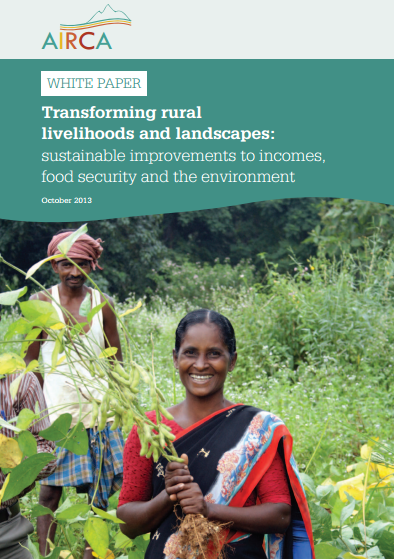
Transforming rural livelihoods and landscapes:
sustainable improvements to incomes, food security and the environment
INTRODUCTION
There are powerful forces driving change in agricultural systems around the world. The demand for food is rapidly increasing, and meeting it requires more efficient and environmentally friendly food production. Central to this expanding demand is a population predicted to grow from seven billion to more than nine billion by 2050. Concurrent economic and social development will trigger disproportionate pressure on the agricultural sector to produce not only greater quantities of basic foodstuffs, but also more protein, animal feed, biofuels and fibres. Growth in population and in the incomes of a large portion of the expanding population will cause demand for agricultural production to increase at an even higher velocity than the rate of population growth.
Simply increasing the amount of land dedicated to agricultural production is not easily accomplished, nor often advisable. In some parts of the world, land is scarce and under intense pressure as the expanding human population leads to the conversion of agricultural land to housing and commercial uses. In other areas, land is abundant, but is often environmentally fragile or poorly suited to agriculture. Furthermore, agriculture is a ‘thirsty’ industry, and securing adequate water for irrigation is becoming progressively more difficult in the context of competing demands on water supplies. Clearing land to expand agricultural production contributes to greenhouse gas emissions, exacerbating climate change and resulting in more erratic weather patterns (Foley et al., 2005), which make it difficult for farmers to manage their operations according to traditional practices and timelines.
How the world responds to the growing demand for food has wide-ranging implications. Agriculture is of pivotal importance, not only providing food and income for the rural poor, but also meeting the food needs of growing urban populations. Higher outputs must be accomplished by increasing the productivity of the agricultural sector, especially for smallholders in developing countries. But it must also be achieved sustainably in the context of the environment within which smallholders operate, by minimizing negative impacts on air, water, soils, biodiversity and other ecosystem services.



